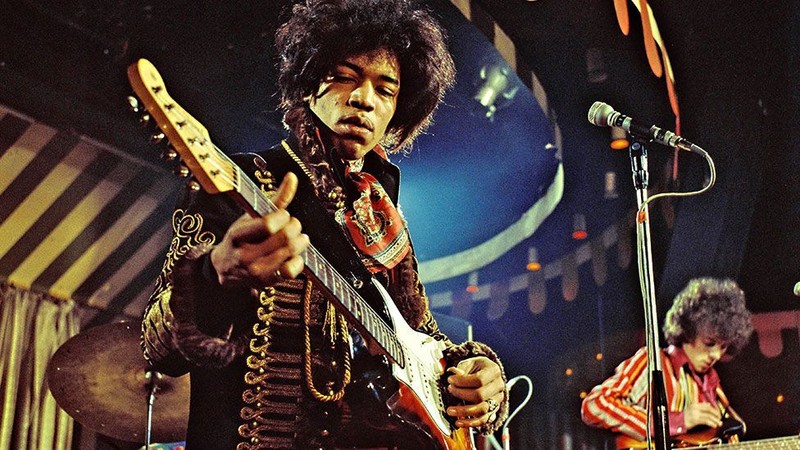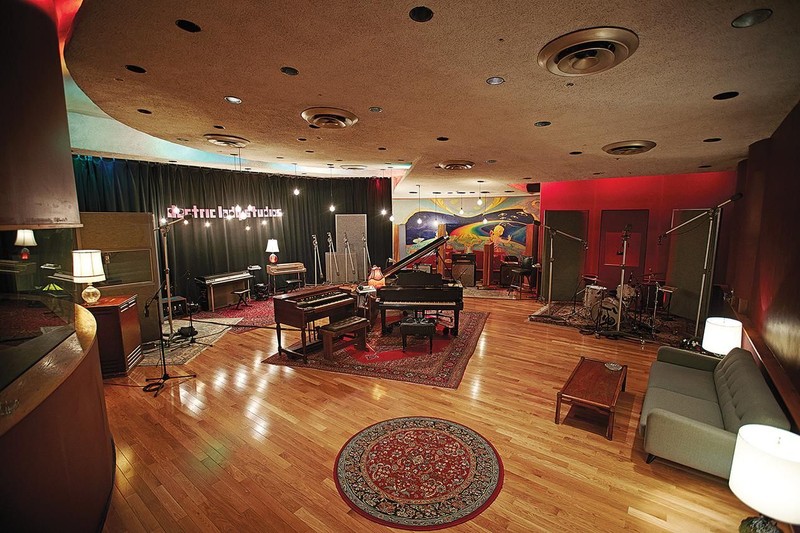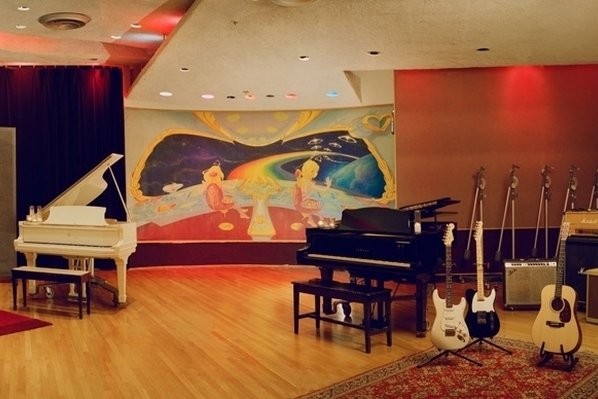Electric Lady Studios
Introduction
Text-to-speech Audio
Images
Jimi Hendrix

Electric Lady Studios

Electric Lady Studios

Backstory and Context
Text-to-speech Audio
The relatively ordinary-looking building at 52 W. 8th Street has one of the more colorful and improbable histories to emerge from the Village. Built in 1929 and originally home to the Film Guild Cinema, the building is one of the first examples of modernist architecture in the city. Within about twenty years, however, a number of the façade’s distinctive modernist features would be removed, leaving a decidedly ordinary building in their place.
Curious things were going on inside as well. The basement of the building was home, from 1930 to 1967, to a country music-themed nightclub called the Village Barn. The club was popular enough to spawn a television program of the same name, which ran for two years on NBC. During the time that the basement housed a country music venue, the abstract expressionist painter Hans Hoffmann lectured in an upstairs studio.
Upstairs, the building housed the Generation Club, a nightclub and performance venue. Some of the biggest names in music performed at the Generation, including BB King, Janis Joplin, Sly & the Family Stone, and Chuck Berry. In 1969, Jimi Hendrix and his manager, Michael Jeffery, purchased the Generation Club. Their intent was to maintain the nightclub and add a small recording studio. Eddie Kramer, a recording engineer, persuaded the pair that the space would be put to better use as a state-of-the-art recording studio minus the nightclub.
The newly redesigned studio, Electric Lady Studios, opened in August of 1970. The space was specially designed for Hendrix, with a distinctly Jimi-esque psychelic vibe. The new studio featured curved walls, sci-fi paintings, and multicolored lights that could be changed to suit any mood. Among the building's most distinctive features, however, were its round, bubble door and round windows. The day after its opening, Hendrix recorded "Slow Blues," his last studio record, in the facility.
Hendrix died of an overdose just three weeks later. But Electric Lady Studios would play a major part in music history long after his death. In the 1970s, Led Zeppelin, Patti Smith, David Bowie, and Stevie Wonder were just a few of the performers who recorded in the space. More recently, following a remodel in the 2000s, the Ryan Adams, Lana Del Rey, Adele, and The Roots have recorded at the studio.
Sources
Sisario , Ben . A Hendrix Castle Where Musicians Still Kiss the Sky , New York Times . August 25th 2010. Accessed October 28th 2020. https://www.nytimes.com/2010/08/26/arts/music/26hendrix.html.
Electric Lady Studios , Greenwich Village Alliance . Accessed October 28th 2020. https://greenwichvillage.nyc/places/electric-lady-recording-studios/.
Naidu , Vaishnavi . Jimi Hendrix's Legacy Lives on Through Electric Lady Studios , Washington Square News . March 5th 2020. Accessed October 28th 2020. https://nyunews.com/arts/music/2020/03/05/electric-lady-studios-history/.
